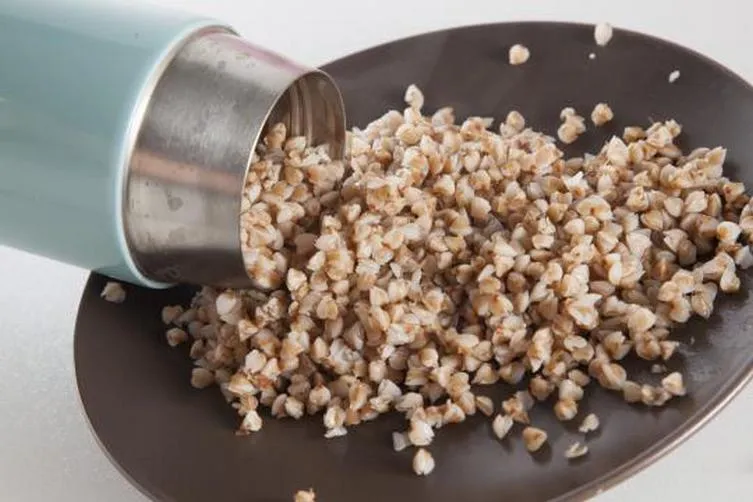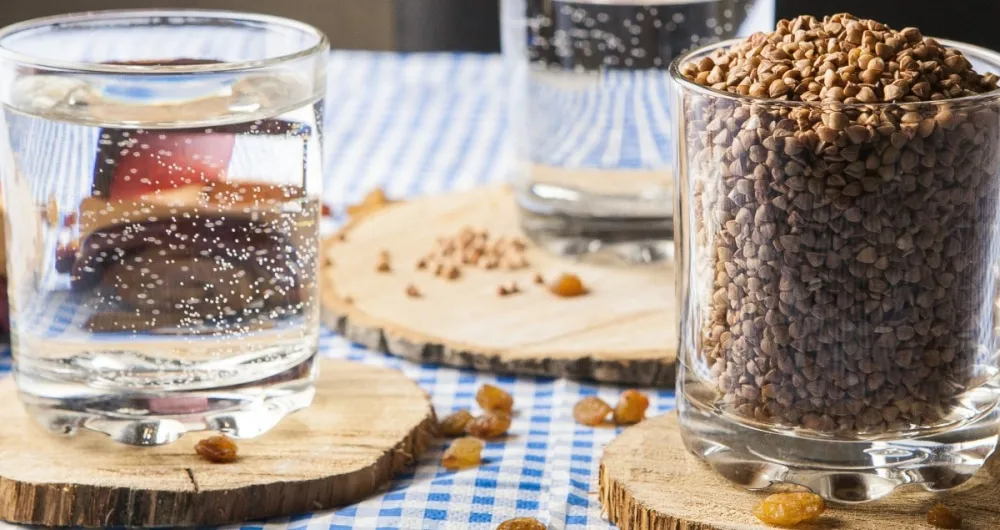Buckwheat is particularly popular among grains. Its benefits for the human body depend on the quality of the grains and the processing method. Let’s explore the main preparation techniques, as well as the benefits and drawbacks of soaked buckwheat.
Table of contents
Calories in 100 g of Buckwheat

Buckwheat provides long-lasting energy. This is due to its complex carbohydrates and easily digestible proteins. The grain is recommended for all ages, as it promotes overall health and has minimal contraindications.
Most commonly, the diet includes whole groats — unprocessed, whole grains with a rich brown colour and no husk.
Important! This product is ideal for athletes and those on a diet. Despite being nutritious, buckwheat does not contribute to weight gain.
In 100 g of dry buckwheat, there are 305 kcal. It contains 14 g of protein, 4 g of fat, and 60 g of carbohydrates. Cooked buckwheat has no more than 102 kcal per 100 g.
To calculate the calorie content:
- Take 100 g of buckwheat and 200 ml of water.
- After cooking, the product expands, yielding 300 g of cooked buckwheat with 305 kcal.
- Divide the final value by 3 — 100 g of porridge contains 102 kcal.
Buckwheat is rich in carbohydrates, but they are complex and have a low glycemic index.
Soaked Overnight in Boiling Water, with Salt, or Soaked in Cold Water

Many diets feature buckwheat soaked in boiling water. This method preserves twice as many nutrients as boiling. The calorie content of soaked buckwheat per 100 grams is 105 kcal.
The preparation process involves the following steps:
- Rinse the grains.
- Soak in cold water for 2 hours.
- Drain the water and pour boiling water in a 1:2 ratio.
- Wrap the container in a towel and leave in a warm place overnight.
- Reheat in the microwave in the morning.
Another popular method is soaking buckwheat in a thermos. In this case, the porridge will be ready in 3–4 hours and will stay warm for longer.
Important! Prepare only the amount you will consume in a day. Soaked buckwheat should not be stored for long.
The calorie content of buckwheat with salt is slightly higher — around 134 kcal per 100 g.
You can also soak buckwheat in cold water. Use a 1:2 ratio of groats to water. This version contains about 100 kcal.
Important! Buckwheat soaked in cold water retains the highest amount of nutrients.
Macronutrients in Soaked Buckwheat
Macronutrients per 100 g of soaked buckwheat:
- Protein – 1.7 g;
- Fat – 0.4 g;
- Carbohydrates – 0.7 g.
Benefits and Drawbacks of Soaked Buckwheat

Buckwheat should be included in the diet regularly. It is often used in mono-diets. The product helps detoxify the body and provides essential nutrients.
Benefits of soaked buckwheat:
- Provides vitamins, minerals, and trace elements.
- Supports the healthy function of internal organs.
- The fibre content stimulates digestion and promotes regular bowel movements.
- Due to its low glycemic index, it is recommended for people with diabetes.
- Boosts metabolism, aiding in weight loss and fat reduction.
- Helps eliminate excess cholesterol.
- Strengthens the cardiovascular system and improves blood vessel health.
Buckwheat also has a positive effect on skin health.
Despite its benefits, consumption should be limited for those with chronic conditions, high blood clotting, or low blood pressure.
Important! Excessive consumption may cause digestive discomfort.
Pregnant and breastfeeding women should monitor their body’s response. If no discomfort occurs, it can be included in the daily diet or consumed periodically.
Conclusion
Buckwheat is a highly nutritious food. There are many ways to prepare it, but soaking preserves the most nutrients. However, despite its benefits, moderation is key — a balanced diet should include a variety of foods. Since buckwheat contains no glucose, it should be complemented with other nutrient sources.







